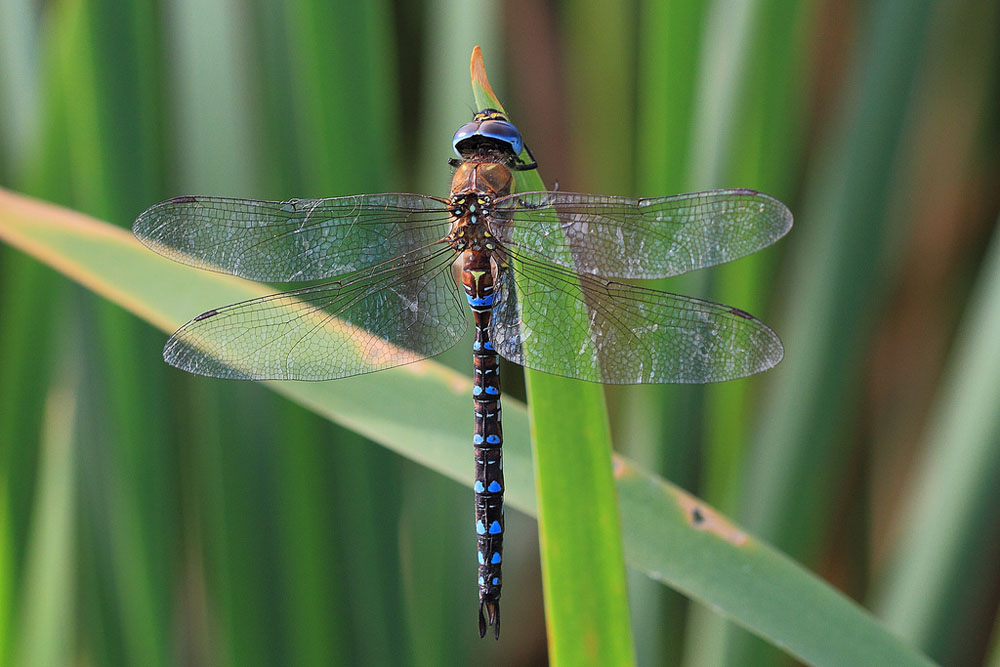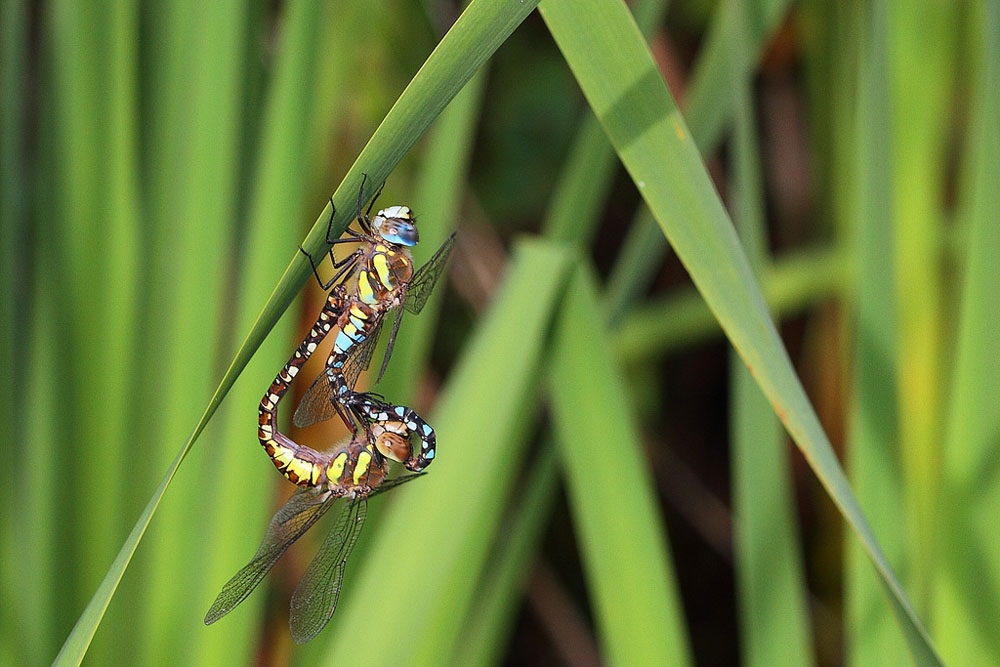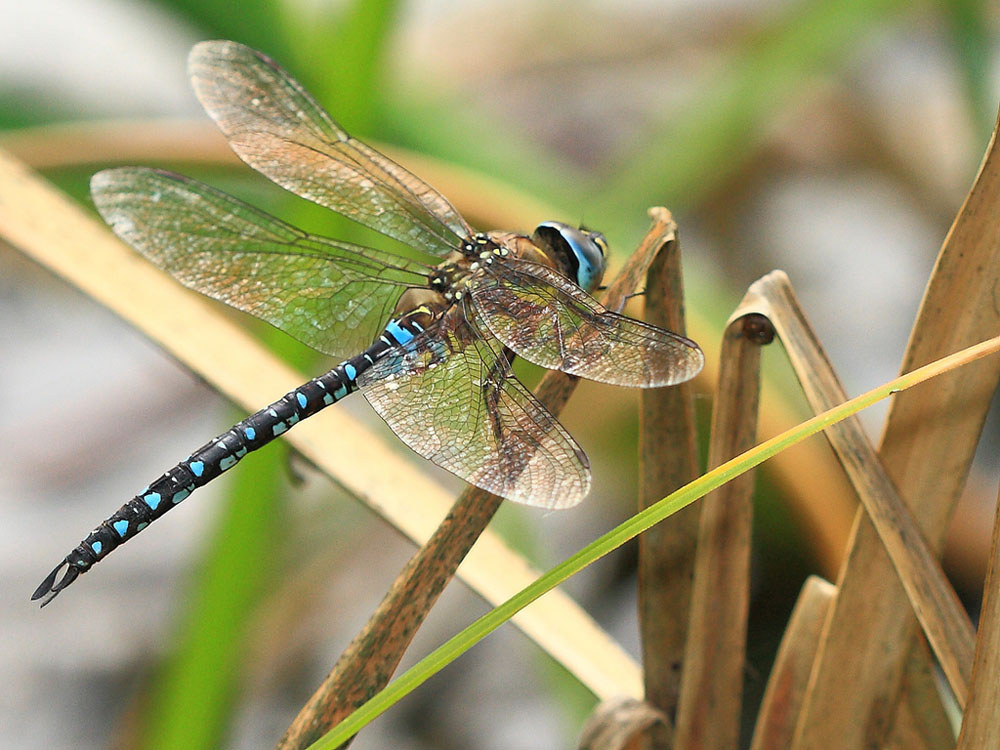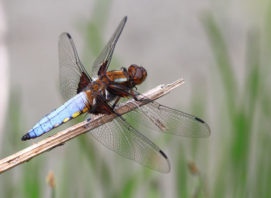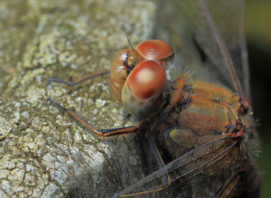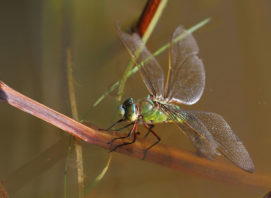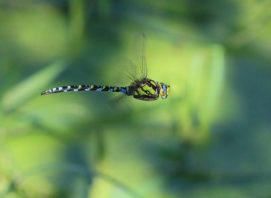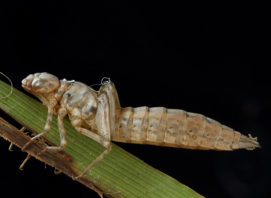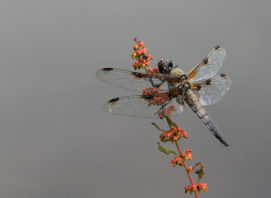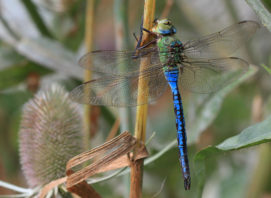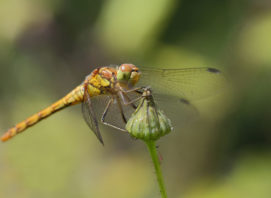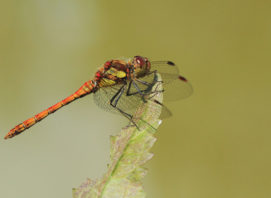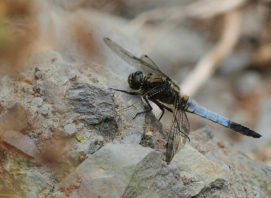Migrant Hawker
Didn’t want to risk getting any closer for fear of scaring the dragon away! Quite pleased with the detail on the wings. This male (along with many others) was patrolling territory along the edge of the pond. The flight of the Hawkers appeared to be low over the water, with inquisitive hovering at bays or breaks in the vegetation, no doubt in search of females. I did see females being chased rigorously by males and there was plenty of copulation taking place on the wing. Unfortunately, all this was happening too fast for me to be able to capture it with my 100mm macro.
The migrant hawker is a medium-sized hawker dragonfly which is on the wing from the end of July through to October, or even November in warm years. It is a very common species during the late summer and autumn, when it can be found hunting in gardens, grassland and woodland some distance from its breeding ponds. Hawkers are the largest and fastest flying dragonflies; they catch their insect-prey mid-air and can hover or fly backwards.
The migrant hawker is mostly dark brown and black in colour. The male has pale blue spots and yellow flecks all along the body, dark blue eyes and pale yellow and blue patches on the thorax. The female has yellowish spots and brownish eyes. The black-and-blue hawkers are a tricky group of dragonflies to identify. The migrant hawker is smaller and has more brown on it than the other three large species (common, azure and southern hawker) and is not on the wing at the same time as the hairy dragonfly.

